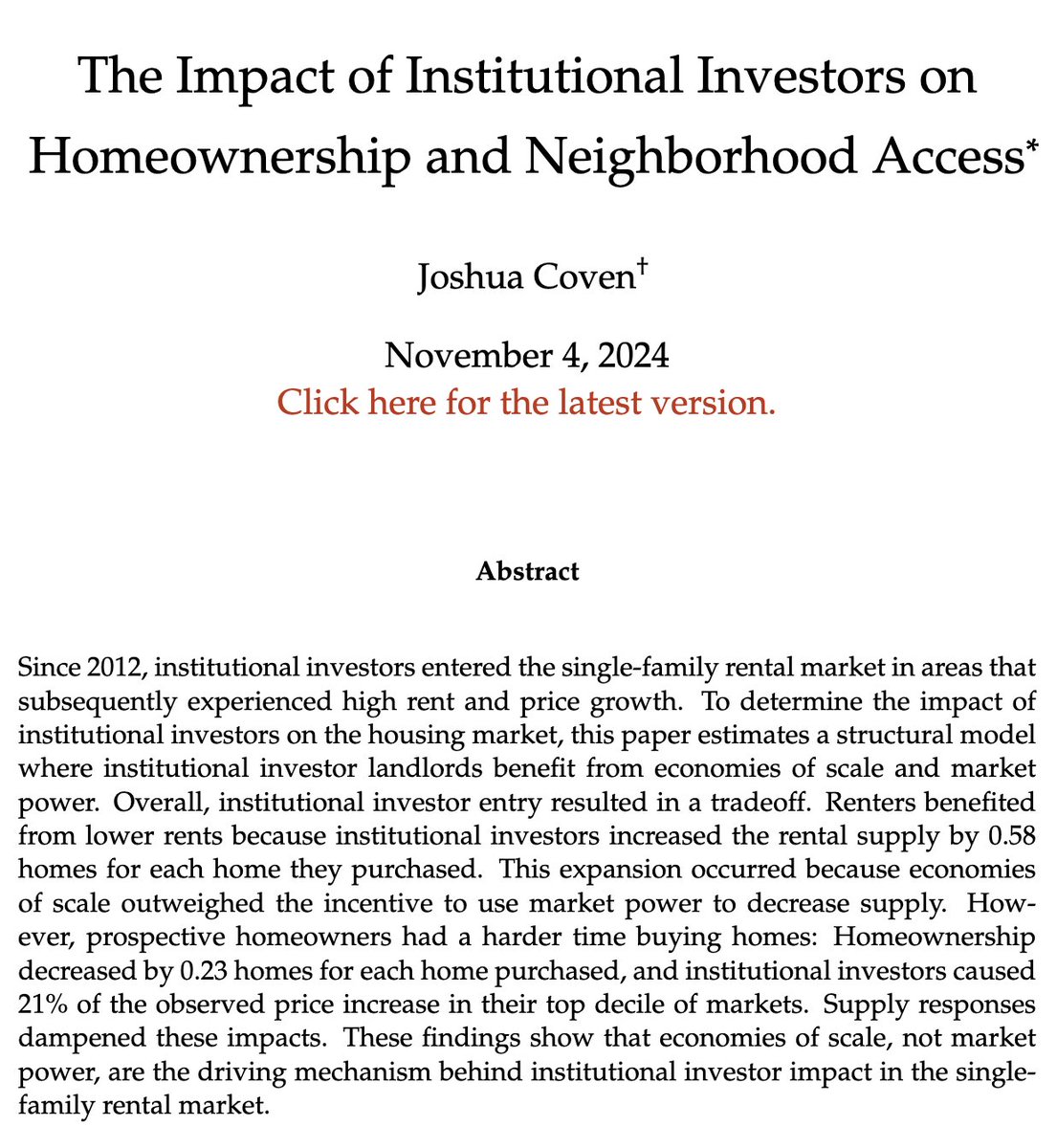
Josh Coven
@josh_coven
Followers
348
Following
497
Media
9
Statuses
49
PhD student in Finance @NYUStern. Interested in real estate, urban economics, household finance, and industrial organization.
Joined March 2020
RT @arpitrage: In a recent paper, we simulate exactly the effects of this kind of capital gains removal!. In steady state, it would improve….
0
35
0
RT @arpitrage: Great job market candidate at NYU Stern—Courtney Wiegand—finds clever exogenous fiscal shocks to Debt/GDP which impact stock….
0
16
0











